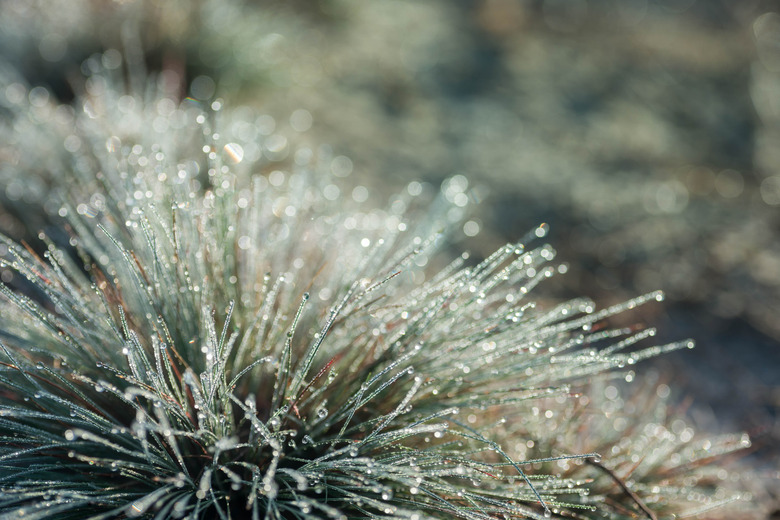What To Do About A Clumping Fescue?
Tall fescue (Lolium arundinaceum, formerly Festuca arundinaceum, USDA zones 4-7) was introduced to North America from Europe in the early 1800s and was used mainly as pasture grass until the mid-1900s. Around that time, a turf variety known as Kentucky 31 was developed. It became popular, especially in northern climates, because of its resistance to heat, cold and drought. Its popularity isn't necessarily a good thing, however, because seeds get blown about on the wind, and clumps of fescue have a habit of showing up in lawns with other types of grass, such as Bermuda grass (Cynodon dactylon, zones 7-10) and Kentucky bluegrass (Poa pratensis, zones 3-7), where they're considered weeds.
Tall fescue clumps can be highly visible. Dealing with them can be as simple as keeping the lawn mowed so you don't notice them, but if you actually want to get rid of them, you have basically two options. One is to treat them with an herbicide and the other is to dig out each individual clump by hand. No biological controls are known.
Is Tall Fescue Really a Weed?
Is Tall Fescue Really a Weed?
One definition of a weed is a plant growing where you don't want it. Random clumps of fescue on an otherwise pristine bed of Kentucky bluegrass can definitely fit that definition, especially in early spring. Tall fescue grows most quickly in the spring, well before varieties like Kentucky bluegrass even turn green, and it can make a lawn look like an open field.
However, in the areas where it's best suited, which are cool, shady or those with little water, fescue is the grass of choice. Rather than being a problem, its hardiness is an asset in these areas. The clumps that appear voluntarily on an otherwise struggling lawn may look out of place, but they can help maintain a hearty green coloration and grassy texture. So one way to deal with clumping fescue simply is to accept it and maintain it as you do the rest of your lawn.
Controlling Clumping Fescue with an Herbicide
Controlling Clumping Fescue with an Herbicide
If you consider the clumping fescue on your lawn to be a weed, one way to deal with it is to use a weed killer. The one recommended across the board is glyphosate, which is the primary ingredient in Roundup. This is a nonselective herbicide, which means it will kill all the grass, not just the grass you want to kill, so you have to be careful about how you apply it.
Glyphosate works best in the spring. It kills by interfering with growth processes, and clumping fescue grows most vigorously in the early spring. The safest strategy is to apply glyphosate to clumping fescue as soon as winter is over and before the rest of the lawn has started to turn green. Because the rest of the grass is still dormant, there's less chance that it will absorb the glyphosate you spray on the fescue. You still want to avoid broadcasting glyphosate over the whole lawn, though. Spot application is recommended.
You can also kill fescue with a selective herbicide called chlorsulfuron. It's available as Telar XP and Chlorsulfuron 75DF. When spot-applied to clumping fescue, it causes the grass to slowly wither and die, giving the surrounding turf time to fill in as the fescue withers away. Don't use these products if the surrounding lawn is perennial ryegrass because they also kill this type of grass.
Dig Out the Clumps
Dig Out the Clumps
Not everyone is on board with using herbicides for which the long-term effects on the environment are poorly understood. If you'd rather stay away from glyphosate and chlorsulfuron, the alternative is to get out your digging tools and go after the clumps one by one. Using a shovel or knife, dig at least 3 inches into the soil around the base of a clump to be sure to get all the stems. You'll need gloves because extracting the clumps involves some vigorous pulling since the roots grow so deep. After pulling out a clump, refill the hole immediately with soil and seed the area with a grass compatible with the one that's already growing.
